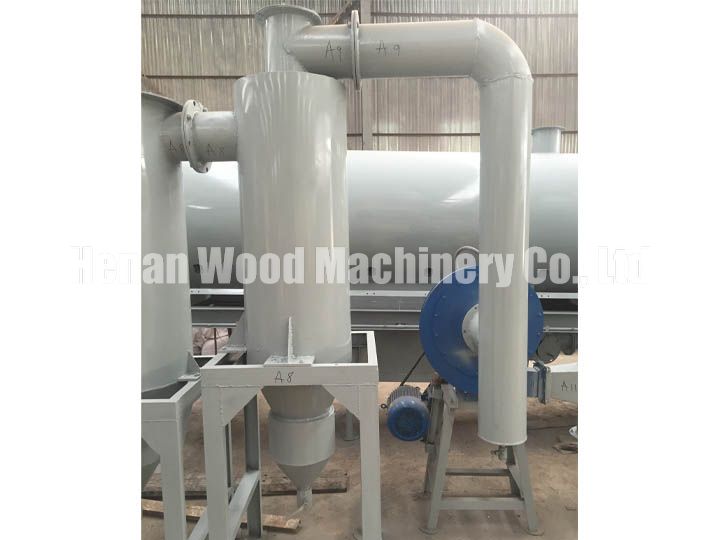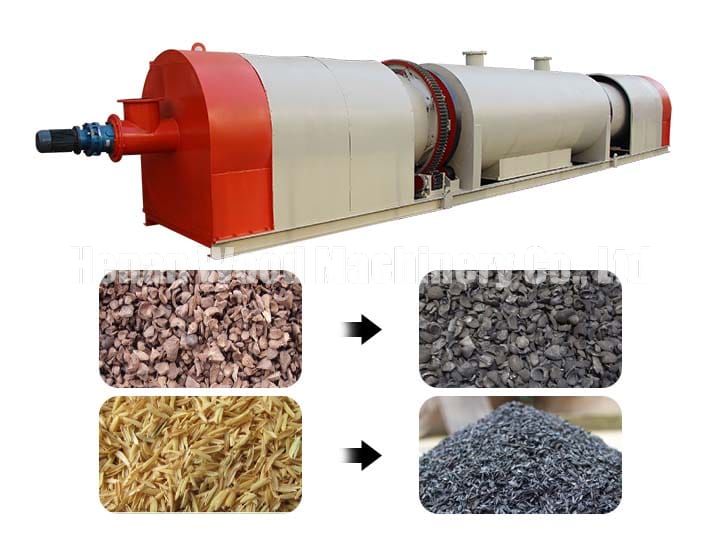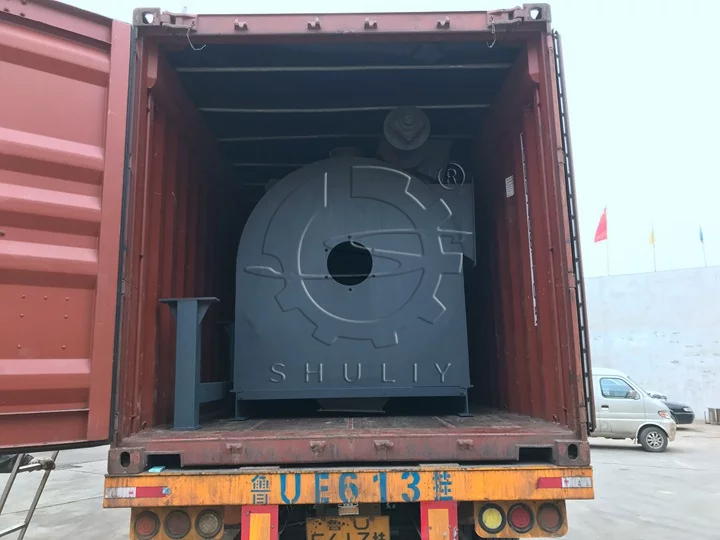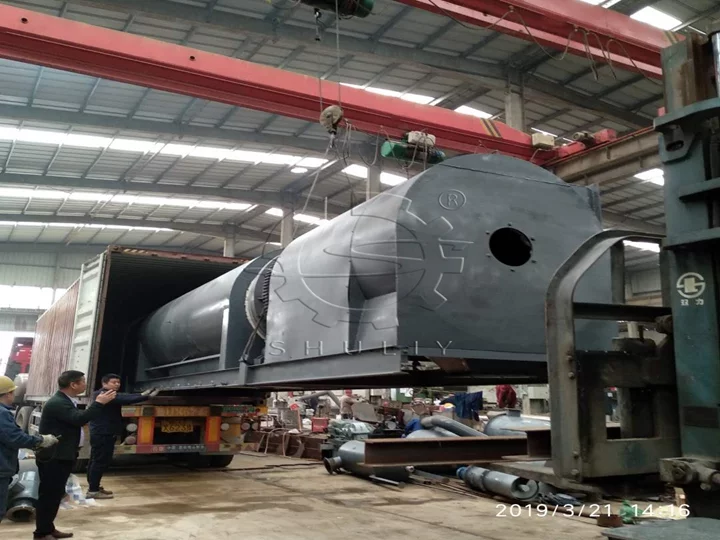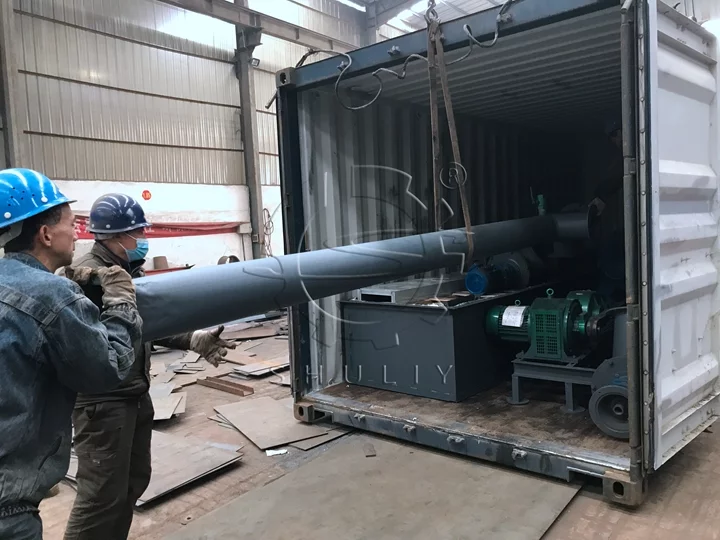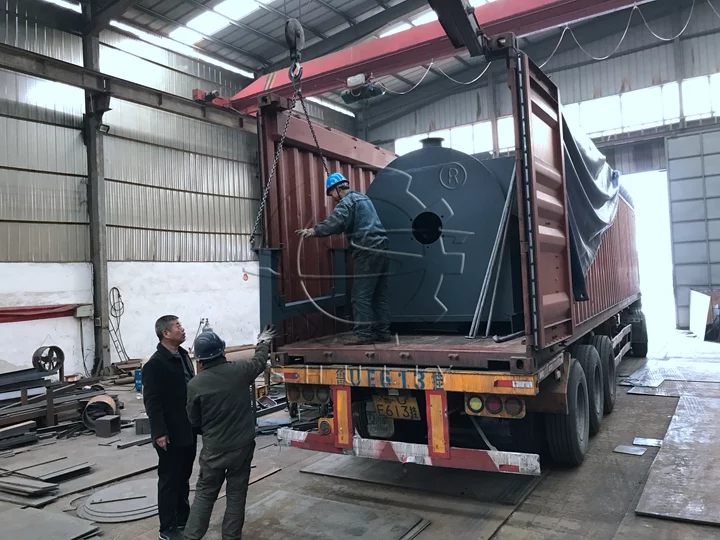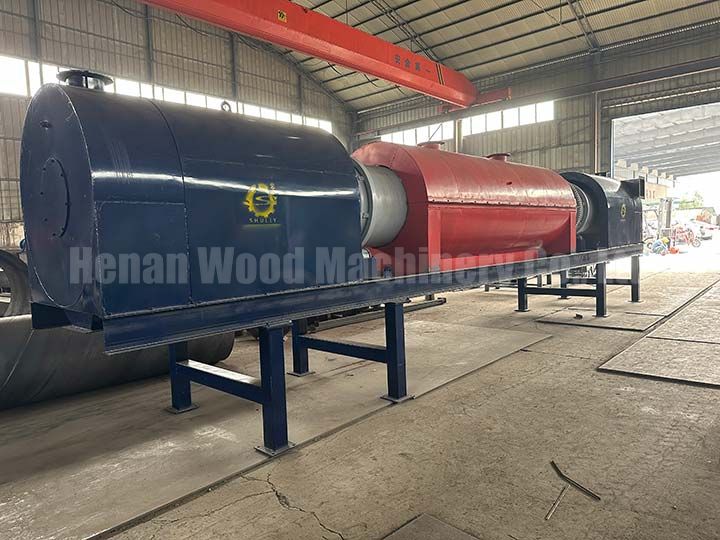Continuous Carbonization Furnace
| Model | WD-CF1200 |
| Diameter(mm) | 1200 |
| Capacity(kg/h) | 1200-1500 |
| Main Power(kw) | 20 |
| Carbonization Temperature(℃) | 500-800 |
| Fan Power(kw) | 5.5 |
The continuous carbonization furnace is ideal for processing various biomass materials such as wood chips, rice husks, and palm husks. With a capacity of 1200-1500 kg/h, this machine supports continuous feeding, allowing for uninterrupted and efficient carbonization.
The system features layered carbonization, intelligent control, and automated collection of by-products like tar and combustible gas. It effectively addresses the challenges of traditional carbonization methods—enhancing production efficiency, reducing labor intensity, and promoting sustainable use of renewable resources.
Raw materials of continuous carbonization furnace
For the continuous carbonization furnace, the requirements for materials differ from those processed by the hoist and horizontal carbonizing furnaces. This furnace is designed to handle softer and smaller materials, which must meet specific criteria for efficient carbonization.
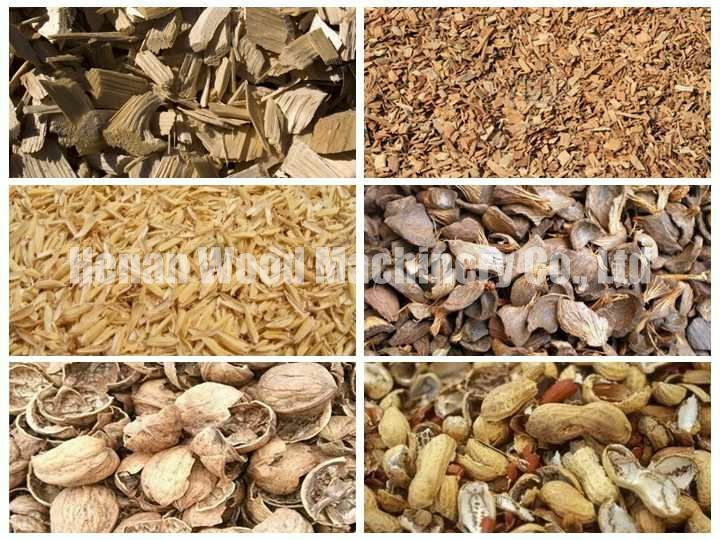
Material size. All materials need to be small and thin, with a size of under 10 centimeters.
Suitable materials. The continuous carbonization furnace can process a variety of carbon-containing materials, including:
- peanut shells
- plant matter
- bark
- straw
- walnut shells
- coconut shells
- palm shells
- sawdust
The raw materials for the continuous carbonization furnace should ideally have a moisture content below 20%. If the materials exceed this limit, they should be pre-dried using a biomass rotary dryer to achieve optimal moisture levels.
Inside the carbonization furnace, high-temperature dry distillation and anaerobic carbonization processes take place, ensuring a high carbonization rate. This furnace is an excellent choice for charcoal processing plants, offering efficient, high-quality charcoal production.
Continuous carbonization furnace structure
The continuous carbonization furnace is composed of several key components: spiral and flat feeding systems, the main furnace body, condensing discharge unit, flame head, combustion pool, purification equipment, and power distribution cabinet.
During operation, the material passes sequentially through a preheating zone, a high-temperature carbonization zone, and a cooling zone to complete the carbonization process efficiently.
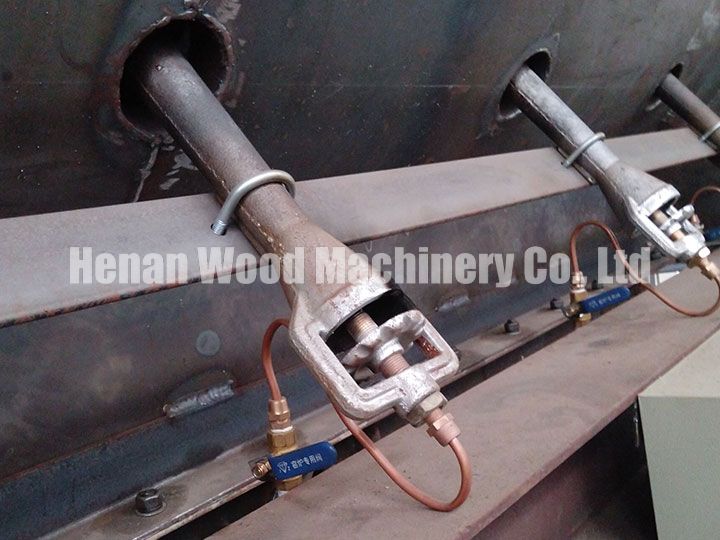
Ignition head of the burning pool
- The WD-CF1200 model has a total of 18 ignition devices.
- The WD-CF1200 model has a total of 16 ignition devices.
- These ignition devices are used when choosing LPG as the heat source for the machine.
Burning pool of the sawdust charcoal making machine
- The burning pool in the sawdust charcoal-making machine is a controlled combustion area.
- It generates the necessary heat to drive the carbonization process efficiently.
- This helps maintain consistent high-temperature conditions throughout the furnace.
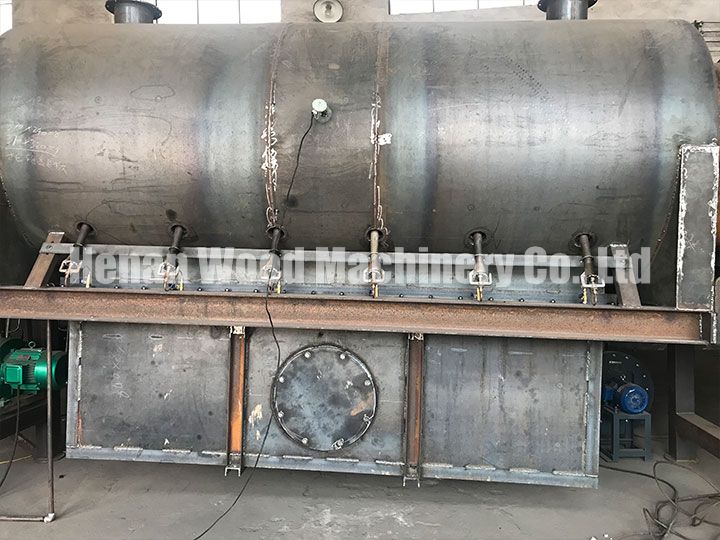
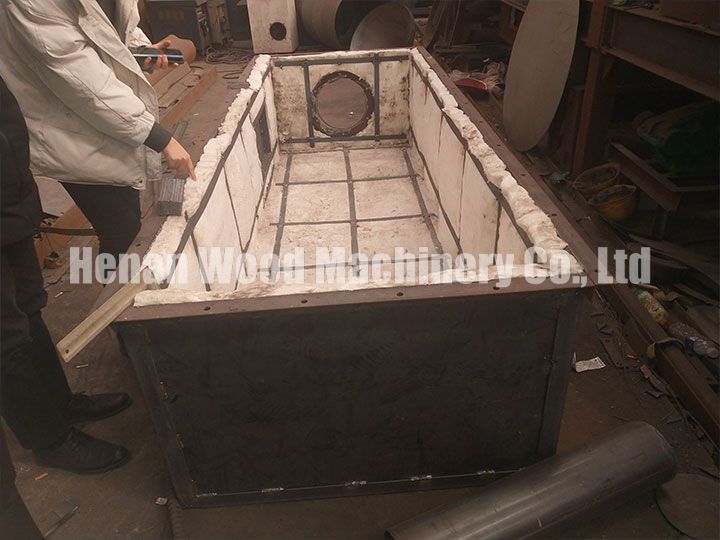
Inside structure of the burning pool
- The combustion pool is made from 4mm-thick Q235 steel for durability.
- It is insulated with a 5cm layer of high-temperature rock wool, ensuring excellent heat retention.
- Rock wool is lighter than traditional refractory bricks, making transportation easier.
- The rock wool provides superior thermal insulation compared to conventional materials.
Inside mineral wool of the carbonization furnace
- Constructed with 310s stainless steel plate and rock wool for enhanced durability.
- Provides improved sealing, reducing heat loss.
- Ensures efficient heat preservation within the carbonization chamber.
- Maintains optimal temperatures in the carbonization area, promoting consistent results.
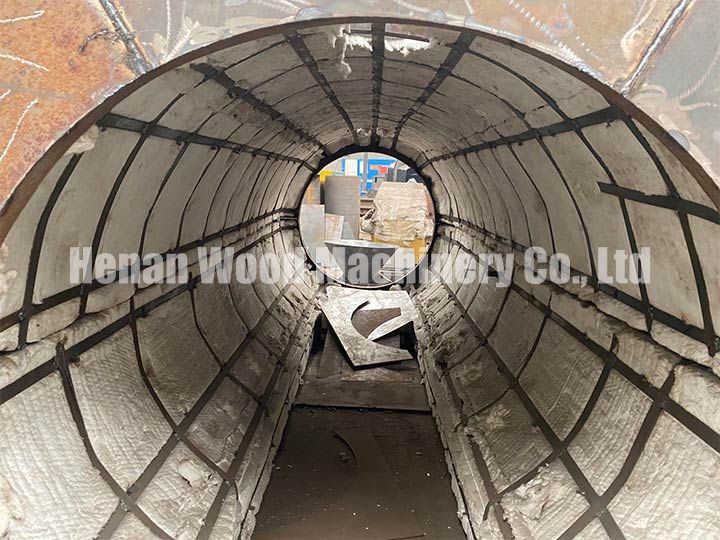
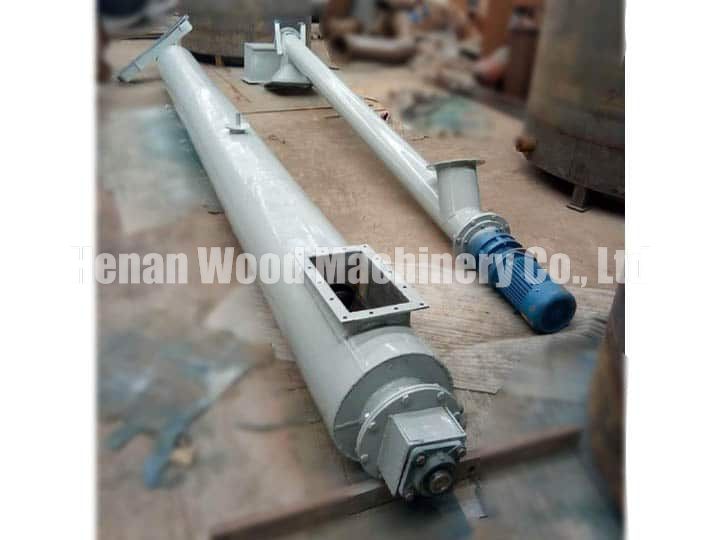
Screw feeder and cooling discharge device
- The cooling discharge device can be connected to either a water pump or a water pipe.
- It cools the high-temperature charcoal to prevent spontaneous combustion during material discharge.
Inside structure of the screw conveyor
- The screw conveyor’s inside structure consists of a rotating screw blade.
- The screw blade is housed within a cylindrical tube.
- This design efficiently transports materials through mechanical movement.
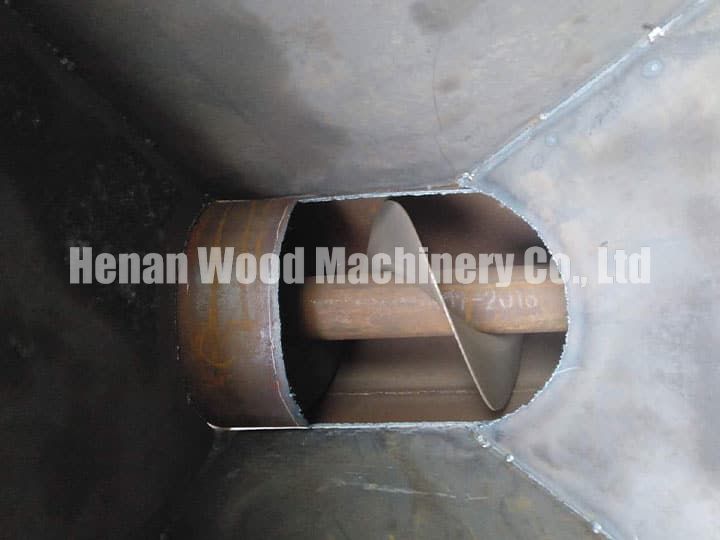
How to carbonize rice husk in a continuous carbonization furnace?
To carbonize rice husk in a continuous carbonization furnace, follow these steps:
Preheating and ignition
- Use Liquefied Petroleum Gas (LPG) to ignite the machine.
- Preheat the furnace for about 1 hour. Around 20-30 kg of LPG is required for ignition, and it only needs to be ignited once.
- The preheating is complete when the temperature reaches between 280°-330°C.
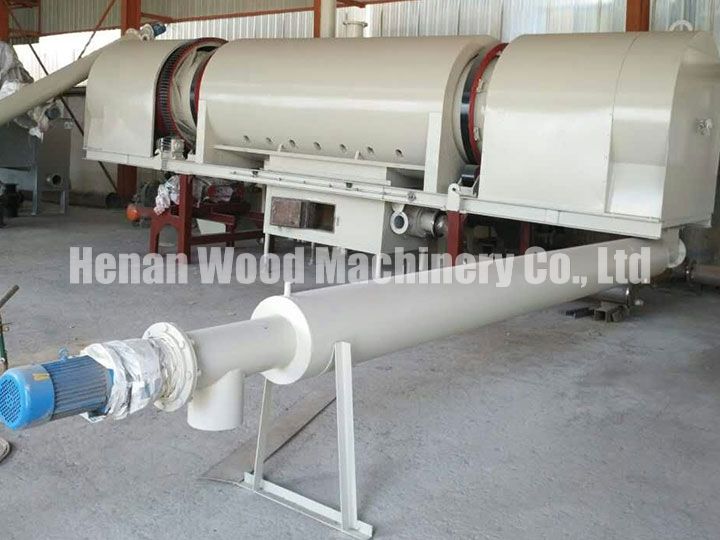
Carbonization process
- Once the preheating temperature is reached, begin adding raw materials, such as rice husk, into the furnace.
- For rice husk, the material can be discharged once the furnace reaches a temperature of 280°C.
- Ignite the combustion chamber, and after 10-20 minutes of carbonization, observe whether hot gas is generated in the combustion pool.
- If flammable gas is produced, ignite the gas to burn in the combustion chamber.
- Once the combustion process starts, turn off the LPG burner.
Cycle and cooling
- A round of carbonization takes approximately 20 minutes, after which the material can be removed and replaced with fresh raw material for a new cycle.
- Cooling is necessary when discharging the material. The furnace has a double-layer condenser, which is filled with circulating water to cool the carbonized raw material before discharge.
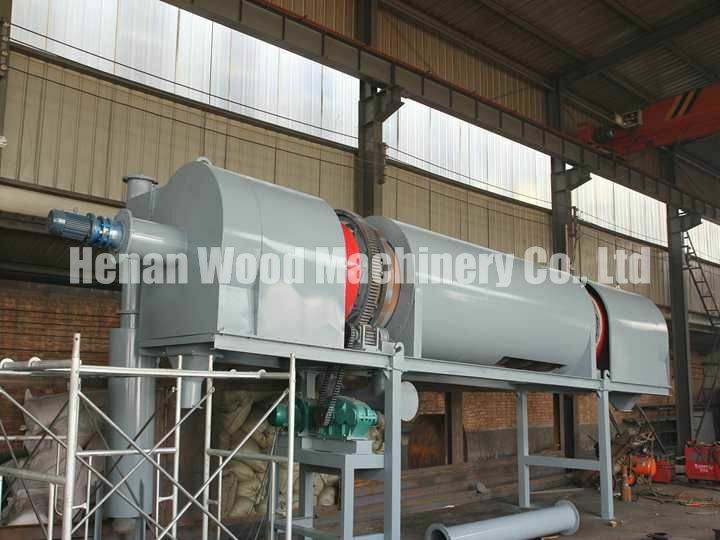
Parameters of continuous carbonization furnace
| Model | WD-CF800 | WD-CF1000 | WD-CF1200 |
| Diameter(mm) | 800 | 1000 | 1200 |
| Capacity(kg/h) | 400-600 | 800-1000 | 1200-1500 |
| Main Power(kw) | 18.5 | 18.5 | 20 |
| Carbonization Temperature(℃) | 500-800 | 500-800 | 500-800 |
| Fan Power(kw) | 5.5 | 5.5 | 5.5 |
The continuous carbonization furnace is named based on the diameter of the furnace, with larger diameters allowing for the processing of more raw materials.
Among the various models available, the WD-CF1000 model stands out due to its balanced output and price, making it a popular choice among customers.
Its moderate size offers an optimal solution for those looking for efficient carbonization without the higher costs associated with larger models.
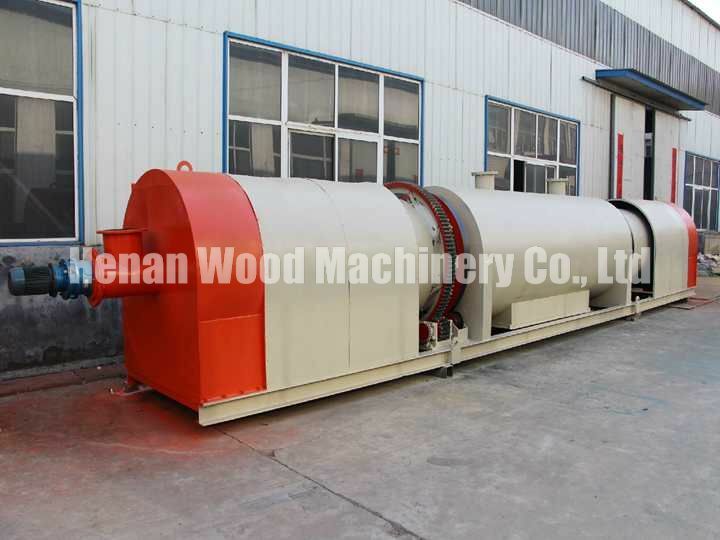
Features of continuous carbonization furnace
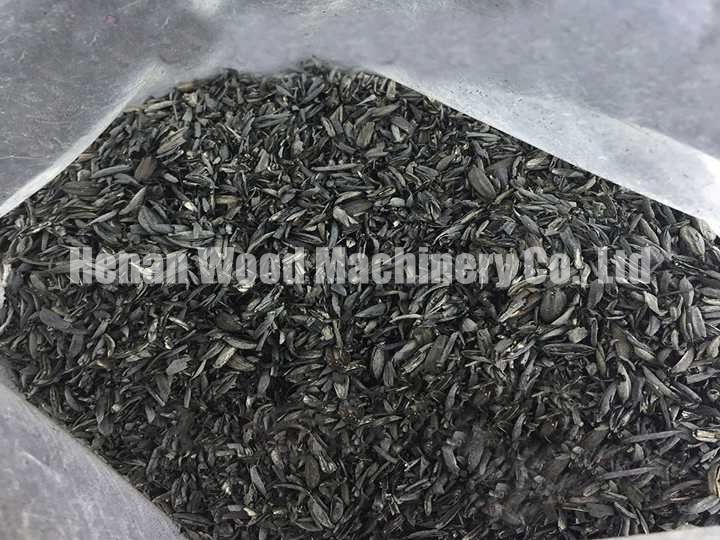
- Continuous feeding
- The furnace allows continuous feeding, carbonization, and discharge, greatly improving efficiency compared to traditional batch equipment.
- High automation
- With an intelligent control system, it reduces labor and replaces manual work with a more efficient automated process.
- Eco-friendly design
- Uses clean fuel and advanced smoke removal to prevent pollution and support low-carbon, sustainable production.
- Automatic by-product collection
- Efficiently collects tar, wood vinegar, and gas during carbonization for comprehensive renewable energy utilization.
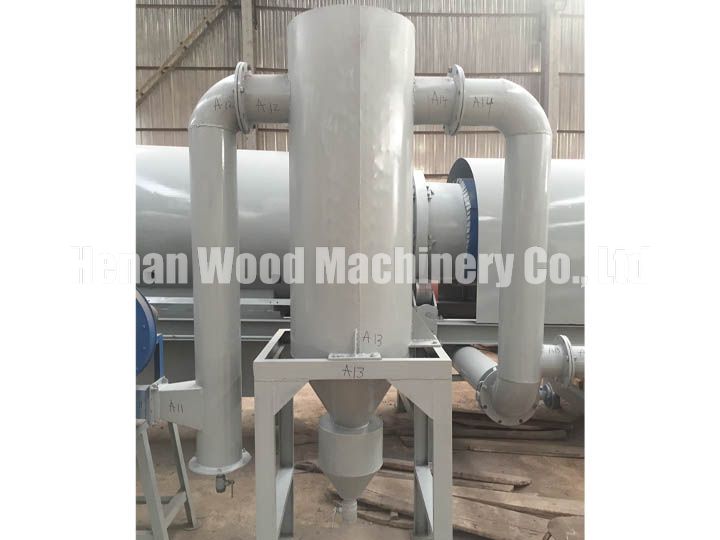

- High-quality output
- The charcoal is non-toxic, odorless, with moisture content below 5%, and burns longer—ideal as a clean, efficient fuel.
FAQs of continuous carbonization furnace
What is the heating source of the sawdust charcoal-making machine?
The continuous carbonization furnace uses liquefied petroleum gas (LPG) as the initial heating source, typically consuming only 15–20 kg per cycle. After running for 1 to 1.5 hours, it begins to produce combustible gas, which can then be used to sustain ongoing operation—eliminating the need for additional LPG. This makes LPG a recommended choice for achieving both energy efficiency and cost savings.
Is the material that can be carbonized by the carbonization furnace only biomass raw materials?
Beyond biomass, the continuous carbonization furnace can also process various materials such as tin foil, aluminum foil, cans, household waste, plastics, and electronic waste. For best performance, the material size should be kept within 10 centimeters to ensure efficient carbonization.
What are the advantages of our continuous carbonization furnace compared with other manufacturers?
Our furnace features a larger combustion chamber, stainless steel construction, and automatic electric ignition. It uses a water-cooled stainless steel fan and a tar-free direct combustion system for higher efficiency and cleaner operation.
How much space do I need to use a continuous carbonization furnace?
Each unit requires a space of 250–300 square meters, with a minimum width of 10 meters and a length of 22 meters. Operating one machine requires a team of three workers.
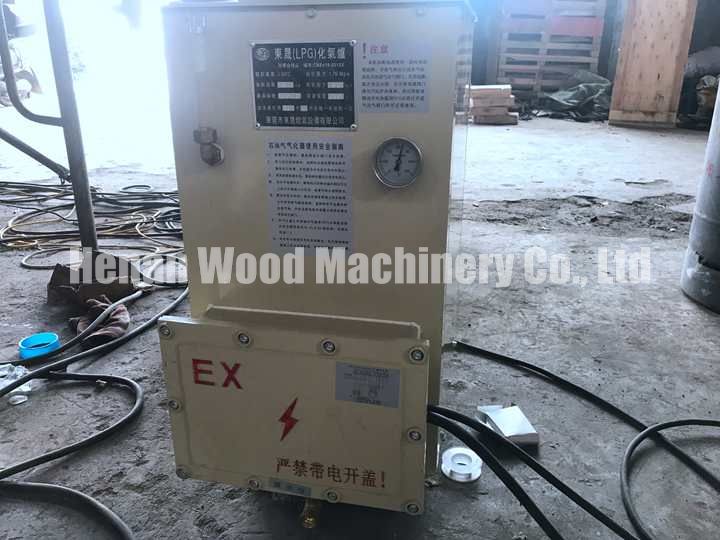

How to do charcoal briquettes production?
The carbonized charcoal can be ground into charcoal powder, and then mixed with a certain proportion of binder. Shuliy machinery provides different equipment to make charcoal in various shapes.
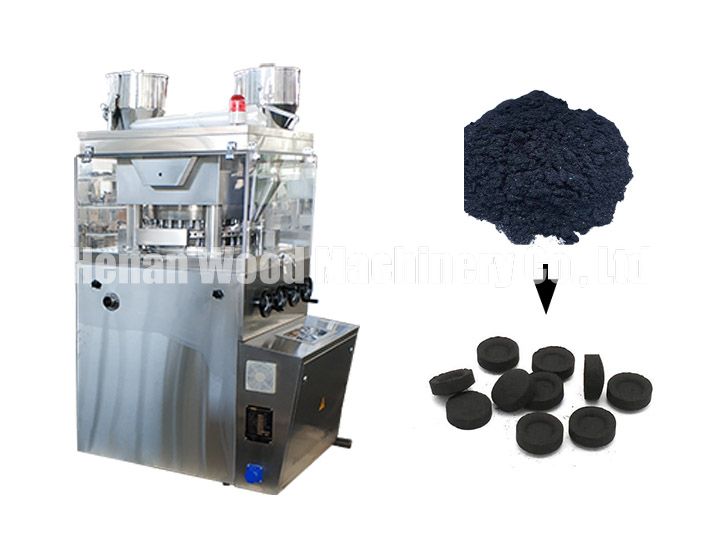
Using shisha charcoal machine to make square and round shisha charcoal. The size, pattern and shape of hookah charcoal can all be customized.
This honeycomb coal briquette machine can extrude charcoal powder into honeycomb or charcoal bricks.
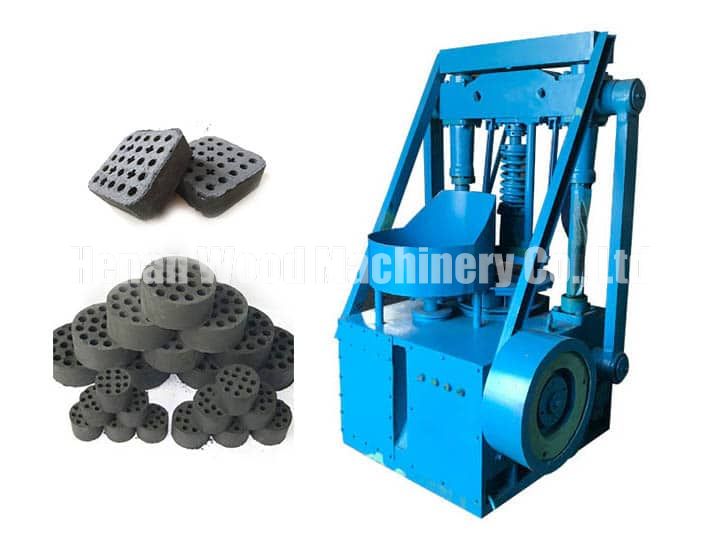
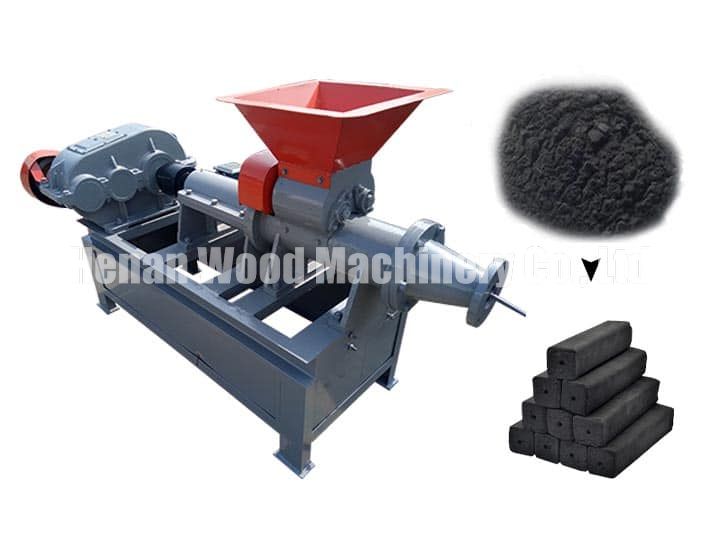
The charcoal extruder machine processes the charcoal powder into regular long sticks, which can be used as heating fuel.
The BBQ charcoal briquette machine can be used to extrude charcoal powder into spherical, square or pillow-shaped charcoal briquettes
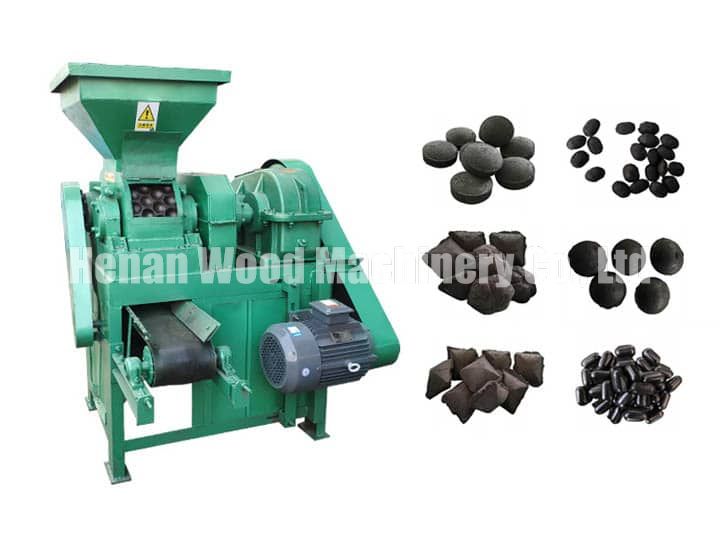
Loading and delivery of sawdust charcoal making machine
A customer in Ghana placed an order for a WD-CF1000 continuous carbonization furnace with an output capacity of 800-1000kg/h from our carbon machine factory.
With a growing demand for barbecue charcoal in the local market, the customer sought to invest in professional carbonization equipment to support the launch of their charcoal production and sales business.

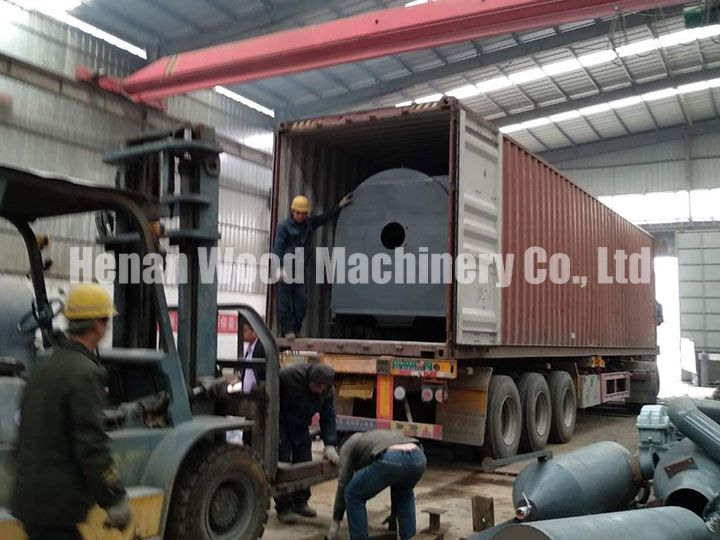
Conclusion
In conclusion, the Continuous Carbonization Furnace offers an advanced and efficient solution for carbonizing a wide range of biomass materials. With its continuous feeding, intelligent control, and automatic by-product collection, it significantly boosts production efficiency while minimizing environmental impact.
Whether for charcoal production, energy generation, or sustainable resource utilization, this machine stands as a reliable and cost-effective investment for businesses looking to optimize their carbonization processes and contribute to a cleaner, greener future.
